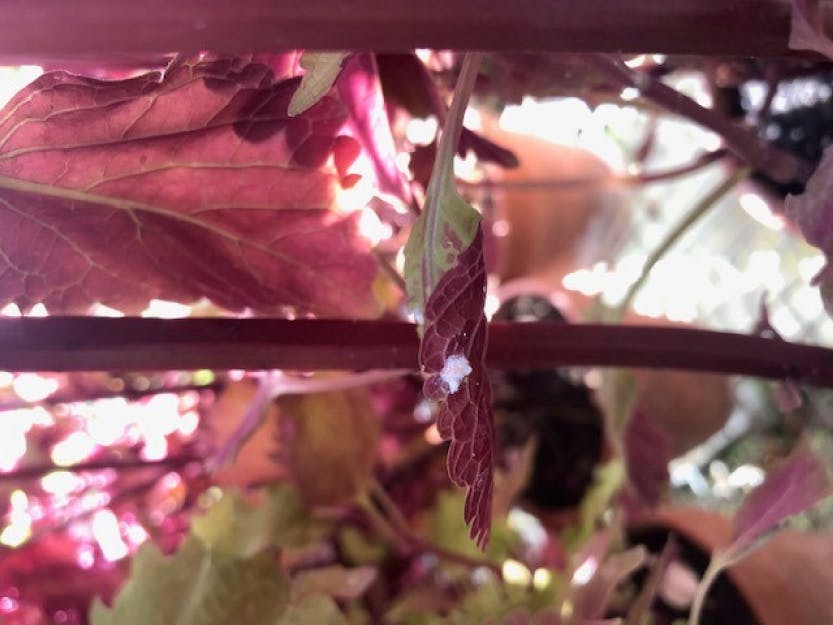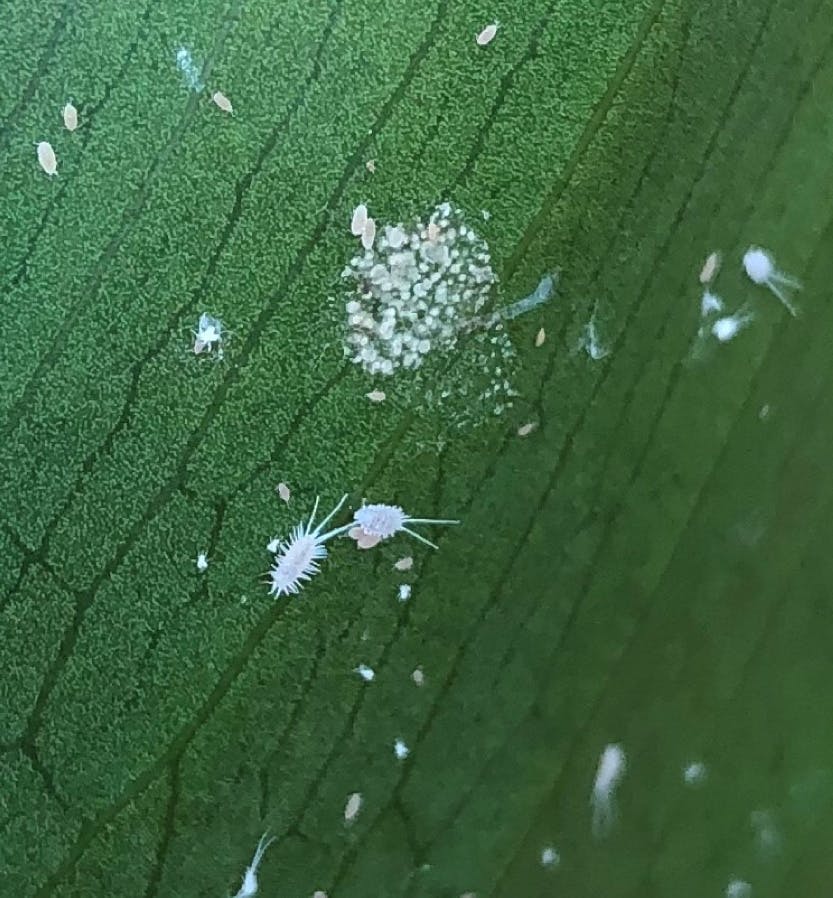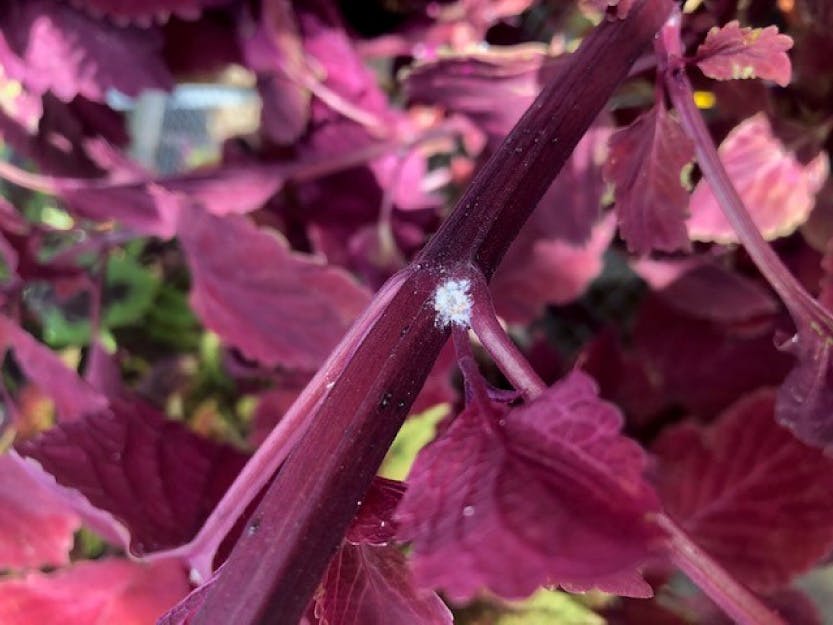Hampton Court's worst enemy: how we deal with the mealybug
Date: 21 October 2019
Author:
Claire Ford
Here in the Hampton Court Palace Nursery, we grow over 100,000 bedding plants per year for the seasonal flower bed displays. Garden pests such as bugs and plant disease are something that all gardeners with plots large and small have to deal with. At Hampton Court we look after 60 acres of formal gardens and hundreds of thousands of plants, making these pests some of our worst enemies. In response, we in the nursery glasshouses use an extensive biological control programme throughout the year, introducing natural predators to control any plant pest and diseases we may have. One of our most persistent pests is the dreaded mealybug. Small, white and fluffy: cute? No, mealybug!
These sap-sucking bugs love protected plants, especially permanent and established stock plants in greenhouses, they love the warm damp climate, and like to cling to the underside of leaves, crevices of the branches, anywhere cosy and dry on a plant. Their bodies are the shape of woodlice, but covered in white dusty wax filaments. They can be up to 2mm in size, can be spotted individually or as an infestation en masse. Either way, seeing them is bad news, as at their worst they can kill off branches, even whole plants. Other evidence of their presence is black sooty mould on the leaves; this is due to them producing lots of honeydew. Although they are slow moving and stay on the same plant as it grows, if they form an infestation and it becomes too heavy for the plant and drop to lower leaves, then their spread can threaten other plants nearby.
Here's the good news: this bug can be controlled with vigilance, pro-activeness and bio-controls. Biological controls are used to combat plant pests in the Hampton Court nursery because these are natural predators and work in harmony with nature, meaning we use very few pesticide sprays. We use the bio-control Australian ladybird, Cryptolaemus montrouzieri, one of its predators, which feasts on large infestations of mealybugs. Another control is the Leptomastix dactylopii wasp, as great fliers they can cover more plants. The female wasp lays up to 100 eggs into the mealybug, feeding off the body fluids which shrinks and kills the bug. Other predators, lacewings, can also feed on young mealybugs. But blasting with a good jet of water can also clean the plant if bugs are found in domestic houseplants.
Overall, be vigilant to hopefully be mealybug-free!
Claire Ford
Nursery Grower at Hampton Court Palace
More from our blog

Creating your own wildflower garden
27 April 2020
You don't need large expanses of land to make your own wildflower meadow providing cover and food for wildlife. Following the success of our wildflowers at Kensington Palace, this year we planted a new wildflower meadow at Hampton Court. You too can do the same with any old patch of lawn in an open, sunny position.

Mistletoe in the Hampton Court Palace Gardens
20 December 2019
One of the most popular questions posed to our gardeners during winter concerns strange lumps of weed growing in trees in the East Front garden. These random and odd-looking growths are in fact clumps of mistletoe.

The art of botanical watercolours: meet the Hampton Court Florilegium Society
06 December 2019
One of the newer collections in the Historic Royal Palaces archives is a large group of botanical watercolours, on both paper and vellum, painted by the Hampton Court Florilegium society. The society aims to establish an archive of botanically accurate paintings and drawings of the plants that are growing in the palace gardens each year.



